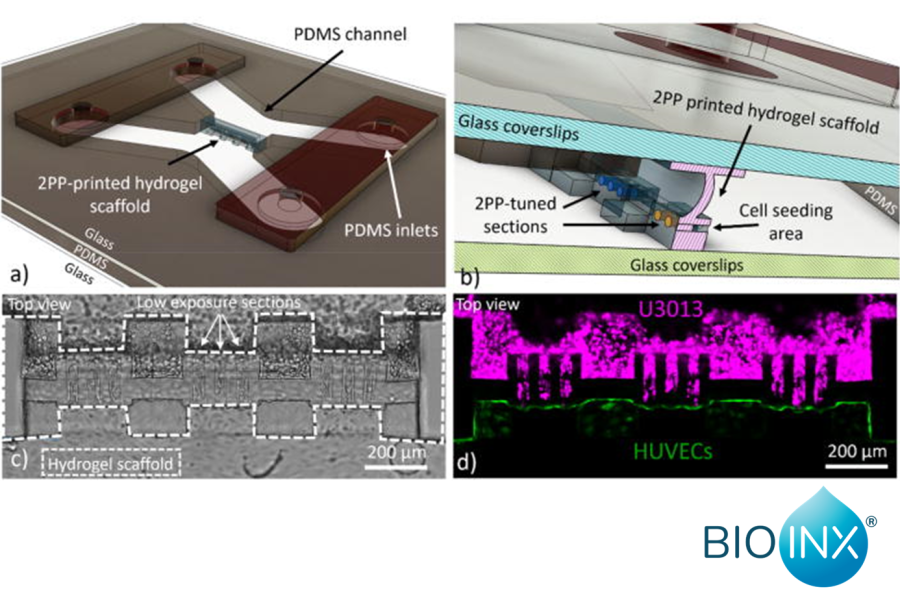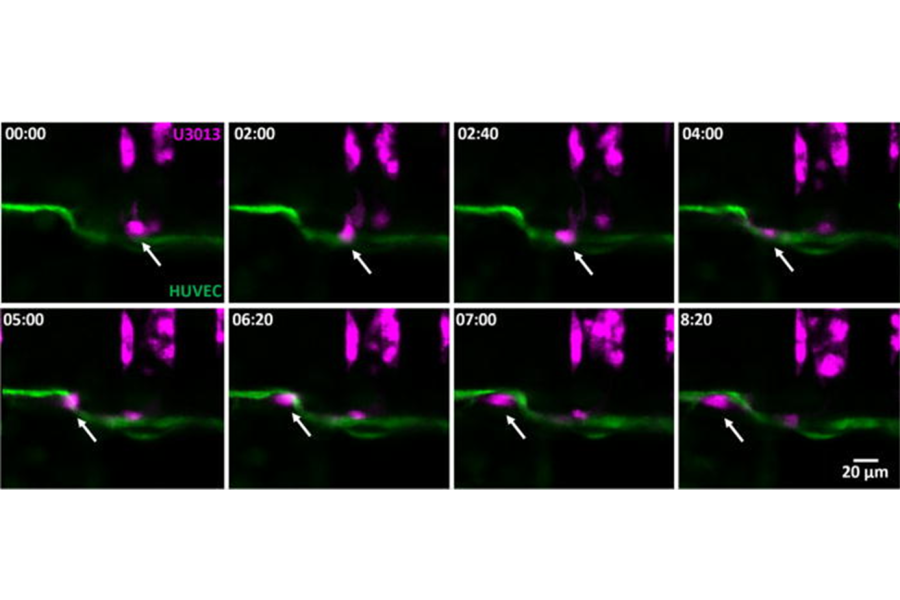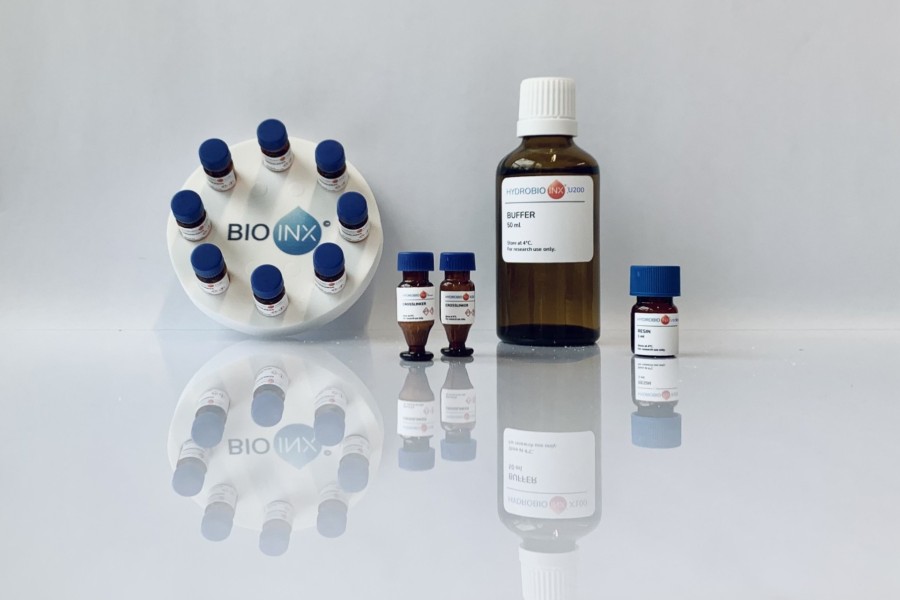Advancing Cancer Research with 3D Bioprinting: New Study Highlights the Potential of HYDROBIO INX U200
The computer-aided design (CAD) of the microfluidic chip with the hydrogel scaffold separating the vascular side (HUVEC) from the channel with the tumor cells (U3013).
A groundbreaking study published in APL Bioengineering demonstrates how advanced 3D bioprinting can revolutionize cancer research by providing realistic in vitro models to study tumor invasion. The research, led by Federico Cantoni and colleagues, of the Maria Tenje Lab at Uppsala University showcases the use of multiphoton lithography to fabricate hydrogel scaffolds that mimic the extracellular environment of the brain, providing new insights into glioblastoma invasion and tumor-endothelial interactions.
At the core of this breakthrough is HYDROBIO INX U200, the first commercially available hydrogel resin specifically developed for multiphoton lithography. Designed exclusively for UpNano’s NanoOne and NanoOne Bio systems, this innovative material allows researchers to create highly precise, biomimetic 3D structures at subcellular resolution—bridging the gap between conventional 2D models and complex animal studies.
Time-lapse of a U3013 (magenta) reaching and migrating along the endothelial monolayer with penetration in the HUVEC barrier (green) between time point 05:00 and 06:20. Top view, time format (hh:mm).
Unlocking New Insights into Cancer Progression
Glioblastoma, one of the most aggressive and deadly brain cancers, is known for its rapid invasion into surrounding tissues. Traditional research models often fall short in replicating this invasive behavior, making it difficult to develop effective therapies. This new study presents a microphysiological system that enables researchers to observe tumor-endothelial interactions in real time, providing unprecedented detail into how cancer cells infiltrate and spread.
Using HYDROBIO INX U200, the research team successfully printed hydrogel scaffolds within microfluidic chips, creating a controlled environment where tumor cells interact with endothelial barriers. The study found that glioblastoma cells invaded faster when an endothelial layer was present, reinforcing the crucial role of the tumor microenvironment in cancer progression. These findings open up new possibilities for developing patient-specific models to test therapeutic strategies.
The applied biocompatible gelatin based resin HYDROBIO INX U200, available through Upnano.
HYDROBIO INX U200: The Future of Multiphoton Lithography
This study underscores the potential of HYDROBIO INX U200 as a game-changer for 3D bioprinting applications. Unlike conventional resins, which often lack biocompatibility and tunability, HYDROBIO INX U200 was engineered to enable fine-tuned mechanical properties, ensuring compatibility with live cell studies while maintaining high-resolution printing capabilities.
Available exclusively through UpNano, HYDROBIO INX U200 expands the possibilities of multiphoton lithography, making it easier for researchers to fabricate complex biological structures for applications ranging from regenerative medicine to personalized oncology research.
Towards More Predictive Cancer Models
This study highlights how cutting-edge biofabrication can transform cancer research, bringing us closer to more predictive, patient-specific models for drug screening and therapeutic development. The ability to observe tumor invasion in real-time within biomimetic environments represents a significant step forward in understanding cancer progression.
BIO INX is proud to contribute to this advancement by providing materials that enable researchers worldwide to push the boundaries of bioprinting. With HYDROBIO INX U200, the future of high-resolution 3D cell culture and disease modeling is here.
Read the full article here: https://pubs.aip.org/aip/apb/article/8/4/046113/3323592/On-chip-fabrication-of-tailored-3D-hydrogel
For more information on HYDROBIO INX U200 and its applications, visit www.bioinx.com or contact us at info@bioinx.com.
ALL IMAGES REPRODUCED FROM: Cantoni et al. APL Bioeng. 8, 046113 (2024).
https://doi.org/10.1063/5.0227135



